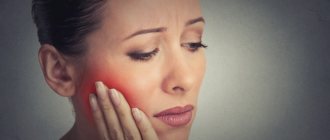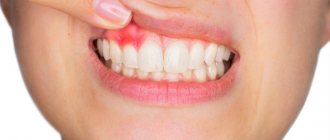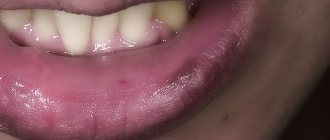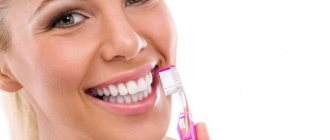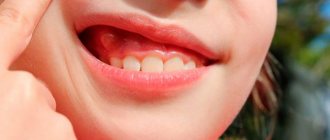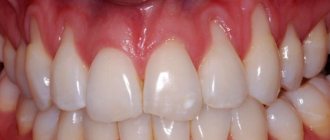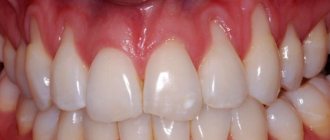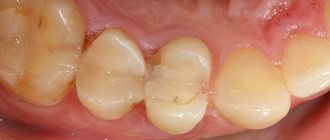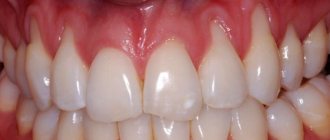Suspect No. 1 – herpes
- Cause. When pimples appear on the lips, the cause may be the activation of the herpes virus, which occurs under the influence of external factors, for example, hypothermia.
- Emergence. Before the rash appears, swelling and pain occur, then severe itching appears, after which vesicular pimples on the lip “ripen.”
- Localization. Most often, herpes is localized along the edges of the lips or in their corners.
- Appearance. With herpes on the lip, pimples resemble vague blisters with liquid. They do not have a specific shape, they are more like spots.
- Quantity. Multiple rashes.
- Feel. Patients with herpes experience burning and itching.
If pimples on the lip turn out to be a manifestation of herpes, doctors prescribe antiviral drugs. This disease should not be left to chance, because after the bubbles burst, the virus spreads along with the leaked liquid, and a new rash appears.
What should you not do if you have a pimple on your lip?
When a pimple appears on your lip, the first thing that comes to mind is to squeeze it out, treat it with alcohol to dry it, or with a wound-healing ointment that you have lying around in your medicine cabinet. This is strictly forbidden. If the rash on your lips is herpes, squeezing it can only lead to more spread of the virus. Not every ointment (cream, gel or solution) is suitable for combating rashes. Here's what else you can't do if a purulent pimple appears on your lip:
- Use lipstick or balm. It is recommended to change lip product every 2 months, as bacteria and other pathogenic microorganisms accumulate on it.
- Use alcohol solutions if the rash is on the inside of the lip. Alcohol can burn the mucous membranes.
- Use peelings. Wherever the rash appears, it should not be treated with abrasive particles. So, for acne, peelings are used only during remission of the disease.
Suspect No. 2 – acne
- Cause. Acne is a multifactorial disease. The main links in its pathogenesis are hyperkeratosis, excessive sebum production, colonization of propionibacteria, and inflammation. For example, if a small whitehead appears on the lip, a blockage of the sebaceous gland could occur, leading to the formation of a closed comedon.
- Emergence. Acne usually appears suddenly.
- Localization. With acne, pimples rarely appear on the lip, since there are few sebaceous glands in this area. Most of them are in the so-called seborrheic zone - the nose, forehead, chin, this is where acne occurs most often.
- Spring view. A slight swelling of red color; if a purulent pimple has formed on the lip, then a white head can be seen inside, the acne takes a cone-shaped shape.
- Quantity. Most often they pop out one at a time. In severe cases of acne, they may merge.
- Feel. Papules and pustules may be painful, especially when palpated.
After opening, the acne fades, so many people think that this is a great way to get rid of them, but this approach can lead to aggravation of the problem, an even greater spread of the rash.
Pimples on the lips: causes
Acne on the lip may appear for the following reasons:
- herpes virus;
- blockage of the sebaceous glands;
- stress, psycho-emotional disorders;
- allergic reaction;
- disruptions in the functioning of the facial nerves;
- improper hygiene;
- endocrine disorders;
- eating large amounts of sweets and fatty foods.
Only a doctor can determine the exact cause of the appearance of a pimple on your lip, so before you run to the pharmacy for the ointment that you prescribed for yourself, it is better to first visit a specialist and entrust him with drawing up a treatment plan.
How to deal with acne?
Treatment for acne depends on the severity of the disease. It is prescribed exclusively by a specialist. For mild to moderate acne, external therapy is primarily used18. For severe acne, emphasis is placed on systemic treatment18.
Clindovit® is a topical antibiotic that can be prescribed for acne vulgaris6. The main active ingredient in its composition is the antibiotic lincosamide clindamycin6. It fights a wide range of propionibacteria strains6. After contact with the skin, clindamycin quickly accumulates in comedones, exhibiting antimicrobial activity6. Clindovit® gel helps reduce free fatty acids on the skin6.
The drug must be applied twice a day (morning and evening) to previously cleansed and dry skin. The first results from treatment with a topical antibiotic usually become noticeable after 6-8 weeks. It is recommended to combine the use of the drug with the use of benzoyl peroxide or azelaic acid (Azelik® gel)18,28.
How to remove pimples above the upper and under the lower lip
Benzoyl peroxide
Benzoyl peroxide is an ideal combination of price and effective results against acne, even in the upper or lower lip area.
Benzoyl peroxide
How to use Peroxide?
Before using benzoyl peroxide, first wash the acne affected areas with tar soap. Even a mild cleanser would do a good job of treating acne before applying benzoyl. Gently dry the acne with a clean towel.
Gently apply a small amount of gel to acne areas above the upper or lower lip. Before using the gel, first read the instructions for use of the medicine for further clarity and confidence in the correct treatment.
Use the gel several times a day or as recommended by your healthcare professional.
Benzoyl peroxide treats acne by primarily unclogging the pores of the skin. It also kills the bacteria responsible for pimples and other cystic skin lesions.
Precautionary measures
During the first three weeks of using benzoyl peroxide, you may experience skin irritation. All these changes are normal. But if your skin does not improve even after four weeks of using peroxide, then you should immediately consult your doctor.
In case you suffer from swelling of the eyes, lips, tongue, throat tightness or breathing problems after using peroxide, contact your doctor immediately.
Do not use any other acne treatment within an hour of using benzoyl peroxide.
Using Ice to Treat Acne
What you need:
- Ice Cube
Clean towel or gauze bandage
What should you do
- Wrap an ice cube in a towel and gently press it onto the acne areas.
- Let it melt for a few minutes.
- Repeat this process several times daily.
Ice reduces the swelling of sebaceous plugs from under your skin. As a result, excess sebum production decreases, and acne gradually disappears.
Why do acne appear on the chin in women and men?
Many of these factors apply equally to everyone, but there are also those to which representatives of a particular gender are more susceptible. This is primarily due to the hormonal sphere and anatomical features of organisms. Many processes in the body occur in different ways. Let's look at the main problems.
Causes of occurrence in women
The most common situation is the approaching period. During this period, hormonal changes occur that affect sebum secretion. Gynecological diseases are also the troubles why a lot of acne appears on the chin of girls and women. Increased secretion of male hormones in the female body or hyperandrogenism also leads to acne.
Cosmetics can also be a problem. Of course, representatives of the stronger half also take care of themselves and strive to be beautiful, but this topic is still closer to the female sex. Poor quality makeup, expired or incorrectly selected creams negatively affect the condition of the skin.
Occurrence in men
Hyperandrogenism can cause acne and excess subcutaneous fat. Frequent shaving and the use of dull blades also contribute to irritation. Acne on the chin can appear in male athletes, the reasons lie in the use of any drugs - steroids or glucocorticoids.
Prevention
In order not to wonder why acne appears on the chin, you need to take preventive measures in a timely manner. It is based on proper nutrition and care. It is also worth considering the following tips:
- when a red lump appears, do not squeeze, apply ice, apply a targeted ointment;
- do not increase the number of washes - the dermis needs its sebum to maintain hydration and elasticity;
- You need to play sports in breathable light clothing, and take a shower after training;
- It is recommended to spend more time in the fresh air, and to ventilate the premises.
Proper nutrition for acne
Fine:
- Foods rich in dietary fiber and pectin (buckwheat, pearl barley, bran, broccoli, spinach, Brussels sprouts and others).
- Foods high in zinc: liver, beef, seafood.
- Cooking food by steaming and in a slow cooker. This way, more nutrients are retained and a minimum of fat is used.
- Foods rich in vitamin A (fish oil, carrots, corn), B (cheese, cabbage, wheat cereal), E (vegetable oils, green peas, wheat germ, parsley).
Badly:
- roast;
- salty;
- spicy;
- fat;
- sweet;
- monotonous.
The recommendations are obvious and very simple. Therefore, when they ask why there is acne on the chin, doctors first of all find out the diet.
Caring for problem skin
It is recommended to wash with cool water. It is better to use special lotions, foams, micellar, but not soap with a high alkali content. Once a week you can make cleansing masks based on clay, use a scrub or light peeling.
Creams with hyaluronic acid, collagen and urea are suitable for moisturizing. Nutrition is provided by products containing panthenol, vitamins and microelements.
Causes
Any skin rashes, be it redness, acne or peeling, are symptoms of problems with the body. It is important to promptly identify the sources of such formations in order to:
- learn in time about the development of a particular disease;
- quickly and effectively treat both the root cause and its consequences.
Fortunately, acne on the face, namely on the chin, does not always signal serious abnormalities; the reasons may lie in a banal lack of hygiene, why does this happen? The answer is simple: in this place the epidermis is dense, and it is more difficult for the resulting fatty secretion to get out. Plugs form that can lead to inflammation.
Let's consider the whole range of reasons, which can be both external (explicit) and internal (hidden).
External factors
The most likely triggers that can lead to skin imperfections are associated with external influences. Some of them are easy to eliminate, but others will have to be dealt with somehow. In any case, external causes have a lesser impact on a person’s overall health.
So, what are the external causes of acne on the chin, as well as under it and on the neck, is presented in the table.
| Source of origin | Description |
| Lack of cleansing | Excess sweat and sebaceous glands, anatomical features of the facial structure lead to an increased content of sebum, sweat and dirt mixed with them. This causes clogged pores and bacteria growth. |
| Mechanical impact | Rubbing your hands, wearing medical masks, and high collars act as irritants and contribute to the development of unpleasant rashes. |
| Extrusion | Getting rid of blackheads, opening comedones without proper disinfection, picking the face often causes acne on the chin on the right, left and closer to the neck in men, women and girls |
| Bad ecology | An increased content of dust particles, carbon dioxide, machine exhaust, and factory emissions in the air negatively affects the condition of the facial skin. |
| Weather | Heat and cold can cause acne |
Hidden factors
These include diseases and changes occurring in the body:
- Hormonal. They are characteristic of puberty, menopause, and pregnancy. Also, the background may be unstable during certain phases of the menstrual cycle, after childbirth and during breastfeeding.
- Disturbances in the functioning of the gastrointestinal tract. In this area, the spectrum of the disease is extremely wide. Both constipation and poor-quality food poisoning can cause problems on the skin.
- Genetic predisposition. We inherit a lot from our parents. Skin type is also passed down to us from mom or dad. If they have problematic or oily skin, or they often had acne and red spots in their youth or older years, then the answer to why acne constantly appears on the chin of girls lies in genetics.
Other reasons
Let's name a few more factors that can lead to problems on the face. The options listed below can be attributed to both internal and external sources, so it is worth highlighting a separate group.
- Poor nutrition. Diets, intermittent fasting, limited consumption of fiber and foods rich in vitamins and minerals, increased fat content, spiciness and saltiness of food.
- Stress. Psychological shocks, fatigue, intensity of the work rhythm, lack of rest.
- Lack of sleep and excess of the hormone cortisol, leading to increased formation of sebum.
Homemade beauty recipes
They have existed since ancient times. Among them there are those that help get rid of unpleasant rashes. Many of them are harmless and do not require consultation with a specialist, but it is still better not to self-medicate.
So, knowing why pimples appear or have already appeared in the chin area, you can use the following safe methods to eliminate them:
- Using aloe juice. This plant is known for its bactericidal effects. Nectar is used in its pure form to wipe problem areas or in combination with other ingredients. Its leaves can be stored in the refrigerator.
- Cucumber masks. Cucumber juice tones and helps tighten pores. Lotions are often made from grated vegetables. To do this, pour boiling water over the pulp and leave for three hours.
- Soda. If rashes do not appear due to demodex, then you can use a lotion based on this product. To do this, soda is mixed with sugar and dissolved in warm water.
Medications
They are prescribed by doctors in accordance with the data of laboratory tests of blood, smears, cultures and others. These can be gels, ointments, creams, masks, injections and systemic preparations for oral administration. Some are necessary for direct treatment, others for prevention. Most medications should be used in courses.
If it is possible to find out exactly why pimples appear on the chin, and acne comes out along with them, and the problem is the malfunction of the thyroid gland, then hormonal drugs are prescribed. If the problem is in the gastrointestinal tract, then adsorbents are prescribed, and in case of a bacterial infection, you need to take a course of antibiotics.
